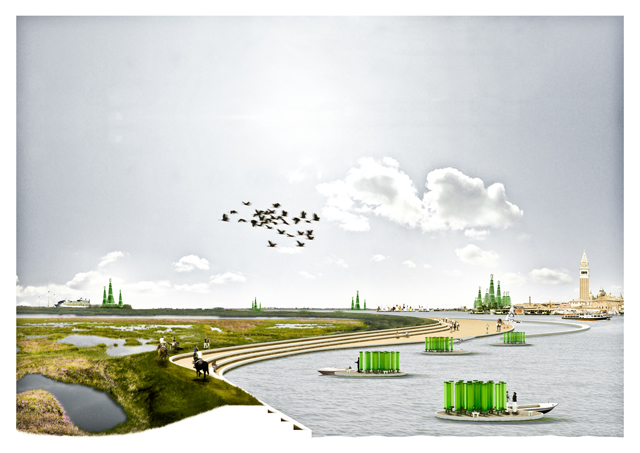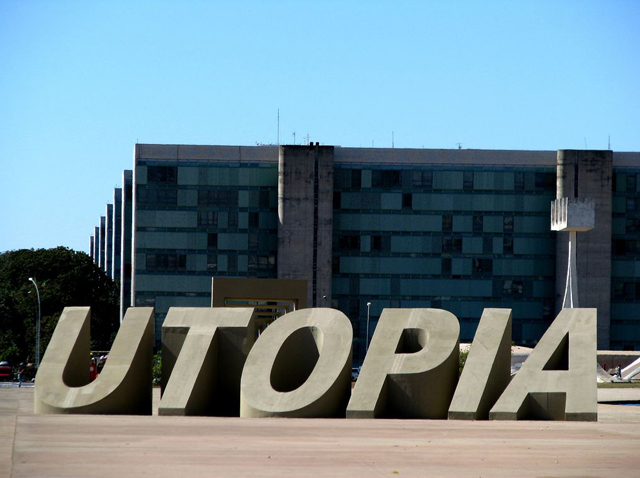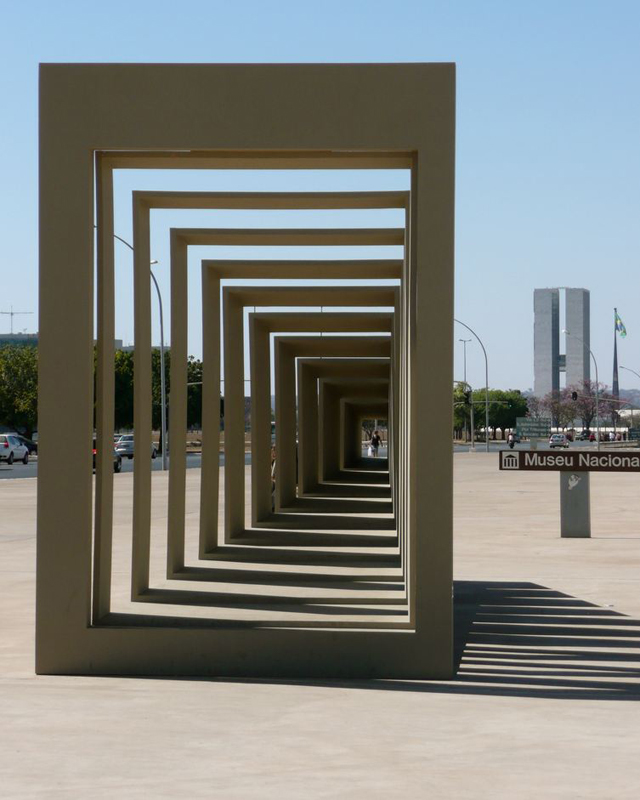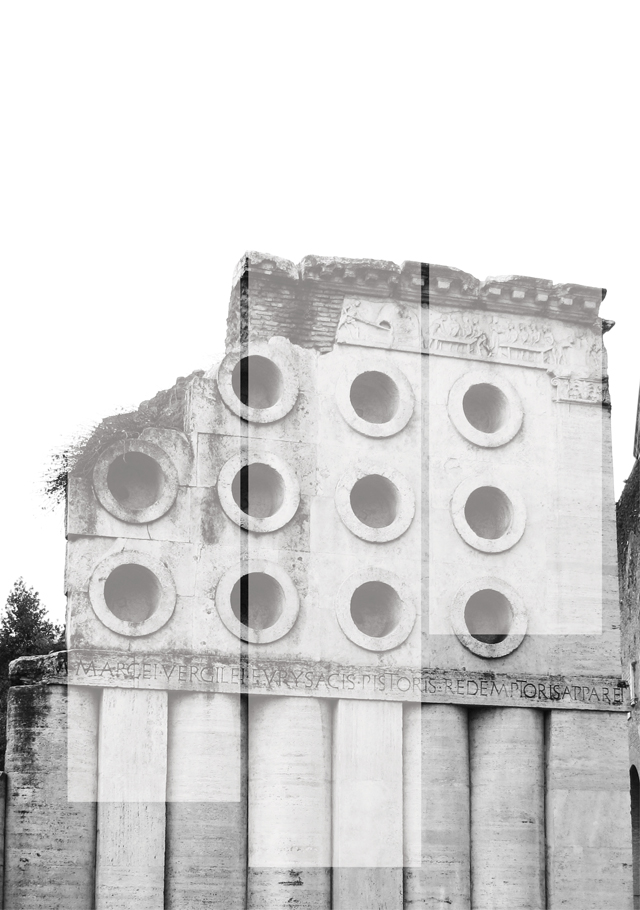PHILIPPE DAVERIO – MA CHE DAVERIO?!
It’s July 28th 2011, second to last day at work in the staff of CityVision and we will finally interview Professor Philippe Daverio. Quick briefing with Francesco, Vanessa and Azzurra and we are ready to begin.
Philippe’s phone rings and the voice answering has a soft morning sound. Mr. Daverio informs us that we better try again in the afternoon.
At 5pm sharp I Skype call him on his mobile, but for technical reasons Mr.Daverio is not able to tell my voice from his own: “I hear you as if you were inside a tube, while a tram is passing in it” he says.
The connection skips, and so does the phone call.. and it makes me lose heart.
We finally decide to call him with my mobile, while Francesco records the conversation with his own. But we need a more private and secure place. After six flights of stairs, and no elevator, we reach the rooftop of the building and between the hanging laundries and the skyline of the Capital City right there in front of us, we try to call again. No way, we fail again culprit is the noise of the city.
At 8:40pm we try again, from a houseline. Daverio’s phone is ringing, the situation seems perfect but again the unpredictable happens. “Hello, mr.Daverio we called you a few hours back for the interview and now we are finally ready” he replies “yes, hi may I ask, where are you calling me from?” we say “do you mean from which geographical position?” “yeah, yeah” we reply sure of ourselves “from Rome, from Rome!”, his sarcastic reply “I ask you because in Milan, where I am, it is dinner time!” us again “ok, we got it we will call back tomorrow morning around 10:30..!”
Friday July 29th, 9:30a.m. editing office of CityVision, last day.
Francesco and I respect our promise and call back the Professor but he is newly committed in a meeting. We seriously begin to think that interview is only a mirage, until we actually get a phone call from him, two hours later!
The following half hour is a continuing and incredible answer hitting that fills up frenetically and indelibly my young notebook.
The interview ends, “good-afternoon, good-evening and good-bye”, jumping and dancing, with my Jack held tight in my hand as if it was a golf club, to the guitar solo and riffs of a historical Gibson guitar played by the mad-hatter wearing shades, Monsieur Slash!
Rock ‘n Roll!
Francesco Lipari + Boris Prosperini: In a episode of Passepartout you speak about Brazil. What’s the meaning of Niemeyer’s ideas for Brasilia?
Philippe Daverio: For Niemeyer it is an attempt to make a dream come true, the possibility to make the impossible a reality. Besides being a great architect he was an urbanist as well and this is important information in order to deal with this topic. It is the idea of an urban plan being filled-up by the idea of total modernity: Brasilia. An urban model still based on socialist ideals, and inside its cores enormous technical restrictions. In the end, that city has never been a real capital city, having problems of obsolescence and inadequacy; those big boulevards of Brasilia were meant and previewed only for a public traffic .Brasilia is the most important expression of the concept of modern architecture. If seen by photo, it is a stunning city, but if you actually visit it is a whole other story, Brasilia’s state of obsolescence is quite striking. Mr. Daverio though, doesn’t reply to the second part of our question.
Francesco Lipari + Boris Prosperini: From the social city to the ideal city. These days there is a big talk about Smart Cities, meaning cities that are intelligent and technologically inter-connects with its citizens. These cities should most of all be an urban space, well lead by far-sighted politics, whom are able to face-up the challenge given by the globalizations and of the economic crisis in the terms of the competiveness and sustainable development, especially keeping an eye to social cohesion, to the spread, to the willingness of conscience, and to creativity, in this way freeing ourselves from all that before seemed essential. In your opinion, is this the only type of contemporary city that we have? Moreover, how do you imagine your own version of the city of the future?
Philippe Daverio: Mamma mia, such a complicated question! The city of the future doesn’t exist, nothing is more different than a city compared to another city. We cannot think that Siena, for example, is not a city of the future. No-one could tear it down, he would be a war criminal, but after all Siena is only comparable to an intersection or a small neighbourhood of Shanghai. This is why speaking of cities of the future discussing of cities so different to each other, can only lead to confusion. When Brasilia was built, no-one could believe that an ideal city had finally been built, making it an applicable model to be followed; later we discovered that it was all an illusion and for that ideal cities are not real. A city conforms to the culture it grows up in, and all European cities are an example of the fact that cities are born because of sedimentation and accumulation, and not because of model plans. In Europe in those places where we built cities by model plans, we created terrible things such as the outskirts of the big cities. Brasilia has generated, in part, the European outskirts.
Francesco Lipari + Boris Prosperini: We admire the living model of the city of Copenhagen where the down town of the city, as the years go by, is becoming more and more green and favorable to single people and to young couples. It is a policy that should be admired as it perfectly matches what should be a healthy model to guide a city in the future. In Italy we follow the exact opposite, why do we always have this mad masochistic tendency?
Philippe Daverio: You’d be right, if you were Danish! I really love Piazza Navona, if somebody were to put a plant in Piazza Navona, I would have him shot immediately! We have followed a very theoretical model that was very favourable to economy; it is to build at low costs and most of all to project at low costs. This is given in part because of conceptual lack of projects, and also because of the stinginess of the “palazzinari”, who spend money until they get sick, buying expensive cars and spending nights with whores! The problem is the cruelty of the projects. The “palazzinari” don’t preach architecture, they preach “real estate”. Of what they build they don’t see at all an architectonic asset, rather they see an instrument to live in.
Francesco Lipari + Boris Prosperini: What did you mean when you stated “an architecture made up of more than the required fuctions. This is the guarantee of perpetuity”. Amongst the several architectures examined by you, which is the best example of this statement?
Philippe Daverio: Architecture is a foolish ambition, while constructions are the instruments where one can live, when their productive and quality cycle end, they are torn down. The “Baker’s Tomb” in Porta Maggiore (Rome) is an architecture that a simple baker, who became rich because of commerce of bread during the war in Rome built.
This construction, not only is still there where it was built, but it has also been used as an example for a big part of architecture for the last twenty years of the last century, as a formal benchmark. Those big circular holes have generated the following architecture, a kind of architecture in which the cost is superior to the functionality. The baker faces time as a challenge, he faces time as a technical data because it is what defines it …then, when it’s time is over, it can be tear down. If you take, for example, this idea of “to torn down things”, it has generated slightly the idea of ephemeral architecture, that has itself generated consequent urban characteristics, such as wide and long boulevards, excellent public transportation and so on. People live in one neighbourhood and work in another one, and they consume in yet a third different neighbourhood. An idea tied to the 1930’s; even the outskirts of Rome were more liveable than they are nowadays, from those places one could move quickly to another area of the city. For example if you watch a movie from the 60’s, the employer would get on the bus and then quickly reach his destination. Nowadays the situation is much more complicated than that.
Francesco Lipari + Boris Prosperini: It has been a while now since Rome has been subject to a non-consistence architectural politic. What do you think about the fact that recently, the architectural movement, is hidden below the skirt of MAXXI museum?
Philippe Daverio: It is hard to define, because the architecture that is not the product of a political virtue, does not become a stable architecture, contrarily it is not able to even communicate with it’s environment. The MAXXI museum is an institution subject to many critical evaluations, much more compared to others that are usually less criticized. I think the participations of Mr. Mayer and Mr. Renzo Piano are successful, I still don’t know about the one of Mr. Zaha Hadid, but of course his knowledge of the city is inferior compared to that of the first two architects. The MAXXI museum is an object bought the market of architecture, and left still where it is, In the same way one would buy by a BMW.
Francesco Lipari + Boris Prosperini: Our Magazine just published the results of the second edition of the CityVision Competition, the international architectural contest that aims to propose new housing ideas and solutions for the city of tomorrow. After Rome, the subject of the matter became Venice, trying to recognize which could be the Key to integrate its historical soul with its future one. The concept resembles the conflicted relation between your “reliable” Biennial Exhibition and the absolute modernity that it should represent. Which of the latest Biennial Exhibitions has better represented this concept?
Philippe Daverio: I thought that the one that declared that architecture does not exist was a madman. The one held 5 years ago, about the 51% of world population was a great Biannual Exhibition. Architectural Biennials have more success compared to Art exhibitions, because they have a great value, which is to truly interest people. The Exhibitions of contemporary art do not interest anyone anymore, they are something self-celebrating that is only useful to insiders. It has died. On the contrary architecture touches topics that are much more useful and innovative.
Francesco Lipari + Boris Prosperini: You don’t like categories, such as political or artistic categories. Abroad though, often, to be part of a category, for example “under 40″, it’s an advantage, but in Italy it is almost as if you were inside a cage built methodically and purposely in order to be controlled. What do you think of the actual Italian architecture compared to the international scenery where young architects guide entire countries towards a rebirth, while in Italy young architects are considered nothing but a little more than students? To be protagonists of a show, without ever being able to go on the stage, is it possible?
Philippe Daverio: Italy is not in love with architecture for other reasons, Fascism has used too much architecture as a propaganda instrument, and this has caused the concept of democracy to drift away from architecture. The mayor of Rome has considered Meyer’s work as an absolute mistake, to fit into such a scenario is very difficult for a young architect. Recently architecture in Italy is beginning to strongly re emerge once again, but we still have the habit of using a foreign architect’s “name” in order to rightfully overcome the jury’s difficulties in selections.
Francesco Lipari + Boris Prosperini: Have you heard the news about the bridge of Messina? Libeskind has been given the task to design the landscape of the two banks, shutting down the contrasting rumours about this controversial and cycloptic “public” work.
Philippe Daverio: In this case Libeskind, not being aware of the situation in Italy, is able to take a serene decision, in a difficult situation. The Italian competitive examination system is somewhat perverted. In France the juries acquire a skim-off, choosing amongst the most suitable planners, but finally it is a politician that makes the final decision. In this way the final responsibility of the realization of the work is held by politics. In Italy this doesn’t happen, for a number of reasons, but mostly so that the responsibility is not held by a politician.
Francesco Lipari + Boris Prosperini: If I mention Cracking Architecture, whom or what comes to mind? I mean the trend to create digital architecture, that is highly valuable in terms of planning research, but is often criticized and wrongly associated to ephemeral architectures.
Philippe Daverio: I don’t agree with you. Also in historical architecture, for example some of Palladio’s projects have never seen the light.
Francesco Lipari + Boris Prosperini: Yes, also SuperStudio and ArchiZoom.
Philippe Daverio: It is a funny game and theoretically speaking even very interesting, the theorization that has a practical consequence. Yona Friedman’s theses have some practical consequences, they are generated by an area strictly pictorial, such as for example the works of Massimo Scolari, and they are analyzed and studied as possible and projectable thoughts. Even Aldo Rossi’s bases are as such, considering that the most part of his works are drawings.
Francesco Lipari + Boris Prosperini: One last question, Professor. Had you ever heard of our magazine CityVision before this interview?
Philippe Daverio: Yes.
Francesco Lipari + Boris Prosperini: Ma che daverio?! (Really?)
Info:
Info:
Title: PHILIPPE DAVERIO – MA CHE DAVERIO?!
Time: 7 novembre 2011
Category: Editorial
Views: 2637 Likes: 1
Tags: -









